Il muscle warm-up before any physical activity it is essential, not only to avoid getting hurt but also to prepare the body and mind for the effort. It is a stage that cannot be skipped, neither in winter nor in summer, because it gives the body the possibility to adapt to the conditions imposed by the environment: temperature, humidity, altitude, etc ...
Muscle warming: what it is
Warming up, in sport, is a fundamental physical and psychological preparation that allows you to guarantee a sporting practice in excellent conditions. The warm-up consists in carrying out a low intensity activity to activate the cardio-pulmonary circuit and joint and muscle mobility with simple basic exercises to be performed before performing any sporting activity. Often overlooked, however, the warm-up is a fundamental phase and the more you go along with the years, the more it must be carried out carefully.
What is it for?
Warming up prepares the athlete for the effort. Helps prevent injuries, increases performance and improves concentration.
Warm up before sport stimulates heart and lungs helping them achieve their optimal functioning in anticipation of intense exercise. Being a less demanding activity thantraining that you will play next, make the heart rate ( FC) accelerate gradually to be ready when you start the actual work.
According to studies conducted with the help of an EKG, skipping this phase before physical activity increases by 70% heart rhythm abnormalities.
Thanks to the heating the body temperature will pass from about 36 degrees to 38/39 degrees. It is the ideal temperature for muscles and the nervous system to function well. This body temperature allows a better elasticity of the tendons and determines an 80% increase in muscle elasticity.
Muscle warming: the benefits
- Gradually increases the heart rate and, consequently, also the flow of blood and oxygen in the muscle districts;
- Increases the temperature of the body at the muscle level, inducing an improvement in the elastic capacity of the muscle and allowing you to perform faster and more fluid movements;
- Increase the production of synovial fluid, a product that has the important task of lubricating and nourishing the articular cartilages avoiding the risks of degeneration due to wear, caused by mechanical friction;
- Even from a psychological point of view, the warm-up allows an ideal predisposition to the next job, preparing you for the type of training you will have to face.

Muscle warming: how to do it
A subject heated to 38-39 degrees can provide more important mechanical work with less tiredness, less muscle injury and articulate and with greater precision than an unheated subject. However, it is important to take into account several factors.
Weather conditions
If it's cold (- 12 degrees)
- Wear clothing to cover the muscles that will be working;
- Warm up long enough to manufacture heat to raise your body temperature.
If it's hot (+ 20 degrees)
- Don't warm up in the sun;
- Watch out for sunstroke and hyperthermia or heat stroke
- Remember to drink regularly (before you are thirsty).
If it rains or there is a lot of wind
- Wear a K-way so as not to lose heat.
The training time
- If it's 7am, warm up longer;
- If you've been running to get to the gym, then you're already partially warmed up.
Age and physical condition
Muscle warming is recommended for all ages. The intensity and duration can be modulated according to the physical condition, the level of training and age. For those who are more advanced in years or restart the workout, the advice is to do a lighter but longer muscle warm-up.
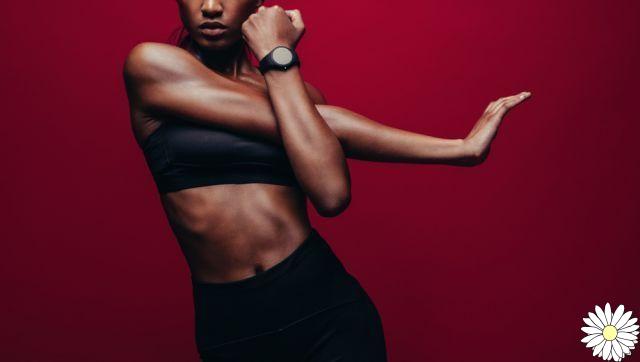
General and specific muscle warming: differences and exercises
We must distinguish between general and specific warming.
General warming it consists of a cardio activity ranging from walking on the spot to running. Exercise bikes, rowing machines, etc. are also good.
The advice is to do it for at least 5/10 minutes to increase the body temperature. They must be followed by dynamic warm-up movements such as squats.
Specific heatinginstead, it includes a specific joint mobilization for the activity you are going to practice.
4 specific warm-up exercises
There are many dynamic exercises: from mountain climbers to running on the spot. We have chosen 4 simple exercises to combine with each other. These exercises are great for raising body temperature, both before weights in the gym and as a pre-walk warm-up.
1 - Cardio exercise: jumping jack
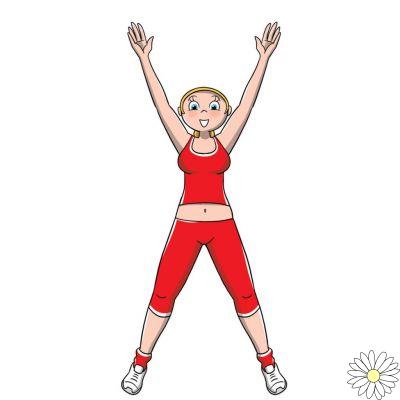
It is a simple exercise. Start standing, legs and arms together. Jump by opening your legs and lifting your arms. Return to the starting position. Be careful about squeezing your abs so you don't hurt your back.
execution: 1 minute.
2 - Leg and buttock warm-up exercise: squats

Start standing, legs shoulder-width apart, toes turned slightly out and body weight perfectly centered.
Bend your knees as if you are going to sit on a chair, bring your buttocks back feeling the weight of your body on your heels. Keep the torso straight, the abdomen active and the arms forward to facilitate balance during the descent phase.
Repetitions: 10.
3 - Arm and chest warm-up exercise: chest press

Standing, legs spread hip-width apart and slightly flexed. Take 2 pound weights or 2 half-liter bottles and open your arms folded, elbows parallel to the floor. Do a closing (exhaling) and opening (inhaling) work of the arms, always keeping the elbows parallel to the floor. It is important to keep your abs active without arching your back.
Repetitions: 3 sets of 20.
4 - Arm muscle warm-up exercise: French press
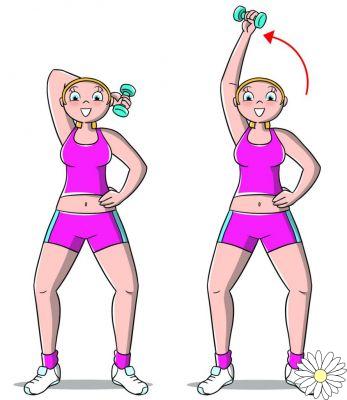
Standing, legs slightly open to the width of the pelvis and slightly bent, stomach in, back straight, arms at your sides.
Grab a weight or a bottle of water with your right hand. Bring your arm up close to your ear and bend it so that the weight is placed at shoulder level. The elbow must remain pointed upwards. Extend your arm without moving your elbow and bend it again. Bring your arm back to your sides, being careful not to let it fall.
Repetitions: 3 sets of 20 repetitions with each arm.

Examples of muscle warm-up
Example of a general warm-up to prepare the muscles for the effort
- To warm up your lower body, first walk by bringing your knees up for a few minutes, then continue by bringing your heels towards your buttocks.
- Go for a slow run by doing rotations with your arms to warm up your upper body.
- Perform bodyweight flexion movements to awaken your quadriceps and glutes and stimulate your pelvis.
- Then, you can do a specific warm-up for each muscle depending on the training you will do.
Pre-run warm-up example
if you go to run, remember that the body is like a machine and works poorly in the cold so never skip the muscle warm-up. Warming up is essential to avoid injuries but also to improve the stride and increase resistance to fatigue.
Always start with 10 minutes of light jogging and dedicate 5 minutes to specific warm-up exercises to warm up:
- The quadriceps, because they are muscles responsible for pushing at the knee;
- The hamstring muscles (hamstring muscles, which connect the hip and knee joints) are fundamental muscles in running because they are responsible for knee flexion and hip extension;
- The twin muscles (calves) because they have the same action at the level of the ankle;
- The buttocks, which are used in the propulsion phase: having weak buttocks in running is deleterious and can lead to knee problems but also back problems (lumbar region).
- The pecs: having toned pectorals helps open the rib cage, therefore to breathe better. It also improves running performance as arms and shoulders are fundamental in running technique.
Specific exercises for pre-run warm-up
Calf warm-up, chair exercise, stair climbing, and standing push-ups: these 4 exercises help warm up and tone calves / quadriceps and hamstring. These muscle groups serve to propel you forward and are important for improving your performance.
1 - Calf warm-up
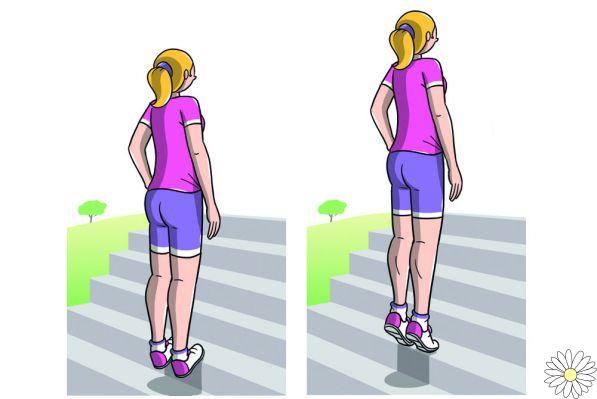
On the edge of a step, take support on your toes with your heels in the void, belly inward and back straight. Breathe in and, exhaling, lift yourself up onto your toes.
Repetitions: 5 sets of 15 repetitions (1 minute recovery while walking).
2 - Exercise of the chair
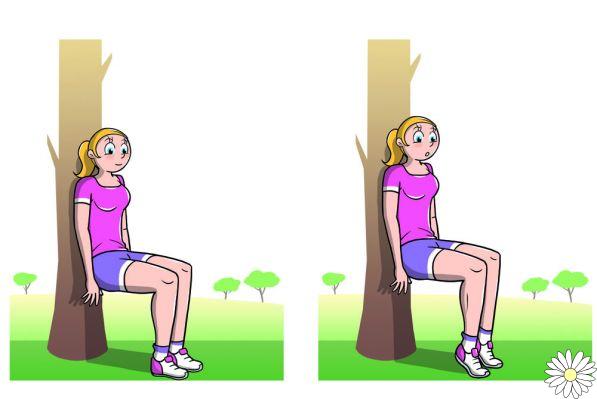
Back leaning against a wall or a tree, slide with the buttocks down bringing the legs bent at 90 degrees as if you were sitting on a chair. Arms along the body and legs slightly spread.
As you inhale, hold the position and exhale bring your belly in and take your heels off the ground. Breathing in, bring your heels back to the ground.
Repetitions: 5 sets of 1 minute (recovery of 1 minute while walking).
3 - Climb the stairs
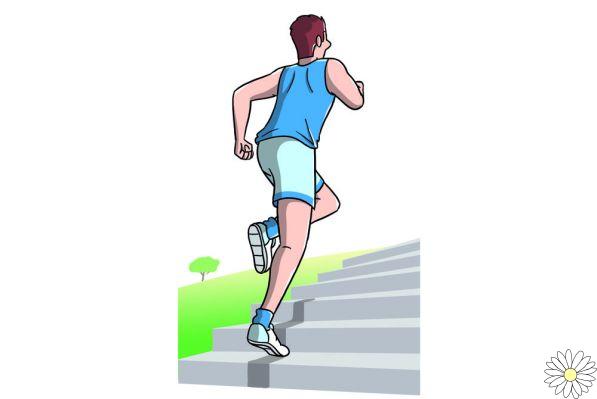
Climb a ladder step by step. The movement is tonic and short. The support is on your toes, raise your knees, accompanying the movement with your arms. Run up the stairs and walk down.
Repetitions: 5 sets of 15 steps (recovery by going down the stairs)
4 - Standing bends
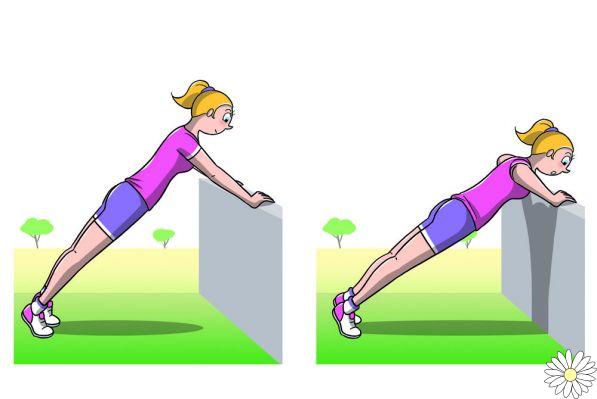
Push-ups allow you to warm up arms / pectorals and shoulders.
On your toes, in front of a wall or a tree, place your hands, arms outstretched, hands at the width of the pelvis. The body must be straight like a plank, shoulders, hips and feet must be aligned.
Inhale and, exhaling, flex your arms and bring your chest towards the wall, taking care to keep your stomach in and your back straight.
Repetitions: 3 sets of 15 repetitions (30 seconds recovery).
Muscle warm-up exercises at home
Fill up on energy in the morning as soon as you wake up to get your muscles going or energize yourself before a training. Watch the video above to perform with Giovanna Lecis, fitness expert at OnlyBelleza, a program of complete heating that will make you work every part of your body!
It takes 5 minutes to stretch your legs and arms, activate the abdominal muscles, unroll the spine and regain momentum and vitality to the music.
Here are some tips from Giovanna to do it better:
- Warming up serves to prepare the body, not to exhaust you, so it must be done gradually;
- The time dedicated to warming up should always be proportional to the type of physical effort that will then be required: if you have planned a 40 minute workout, it is important to dedicate 5 to 10 minutes to warm up;
- Muscle warm-up must be done both in the morning and in the evening, in any case before any physical activity. What matters is the time between the heating and the workout, which cannot be excessive otherwise the benefits of the heating activity cease to exist;
- Giovanna's program lasts about 5 minutes and it is enough to perform it only once to activate and warm up all the joints and large muscle groups;
- The warm-up must be dynamic, with stretching exercises but always done dynamically: the goal is to warm up.
.
You might also be interested
 Swollen belly
Swollen belly Sports for children
Sports for children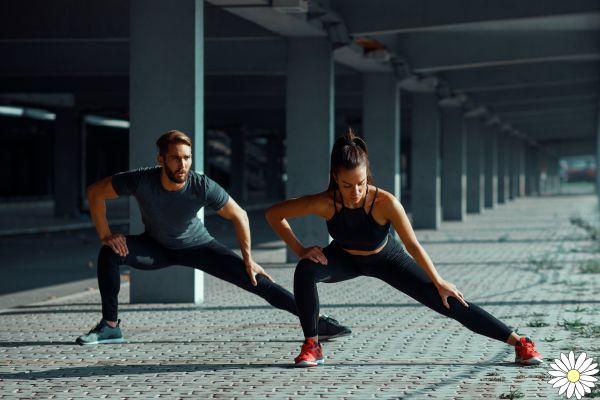 Couple sports: benefits and fitness circuit to tone up and improve the relationship
Couple sports: benefits and fitness circuit to tone up and improve the relationship Benefits of swimming: dive into the water to get back in shape
Benefits of swimming: dive into the water to get back in shape Kegel exercises
Kegel exercises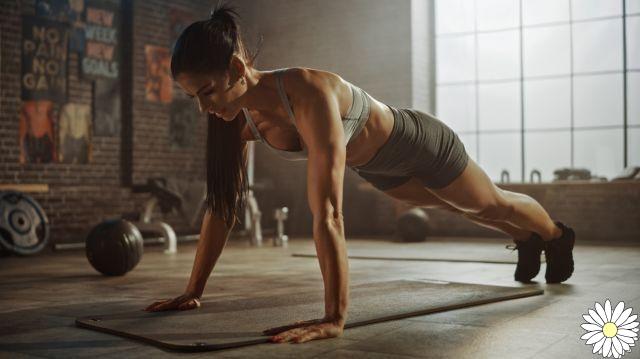 Chest exercises at home: 4 variations of push-ups to do at home
Chest exercises at home: 4 variations of push-ups to do at home Breast cancer: five-a-side football stands out among the sports that are good for you
Breast cancer: five-a-side football stands out among the sports that are good for you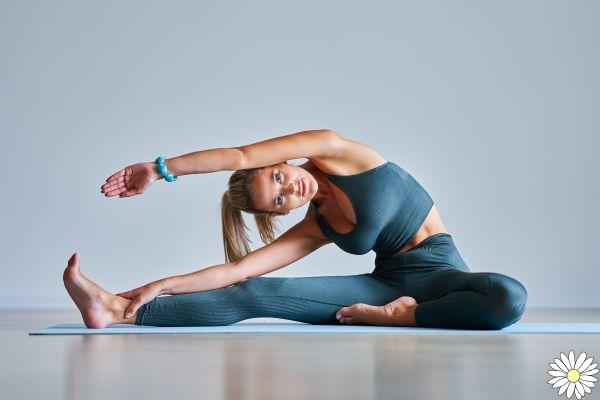 Muscle awakening: what it is, benefits, video lesson to recharge your batteries
Muscle awakening: what it is, benefits, video lesson to recharge your batteries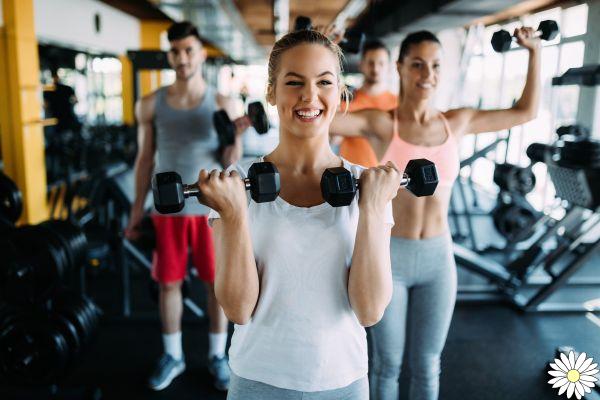 Gym dumbbells: the best on the market and why buy them
Gym dumbbells: the best on the market and why buy them

























